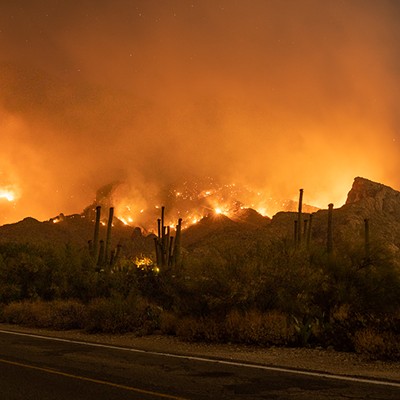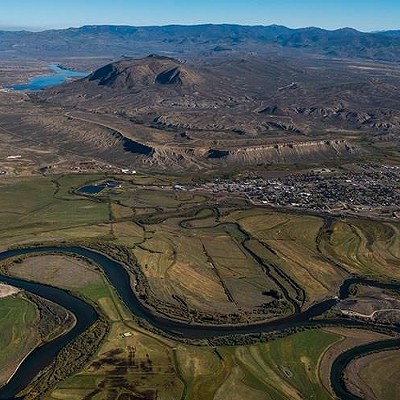Lingering drought conditions, some of the worst in the past century--conditions some postulate could be around for decades, like they have been before--could kill off some of the state's favorite watering holes this summer.
And it won't affect just the few favorite small ponds around Tucson, but some of the state's biggies that draw anglers, boaters, campers and outdoor recreationalists from all over the West.
Dropping water levels at Lake Powell, the second largest man-made lake in America, have left boat ramps high and dry.
"Inflow is the lowest on record," according to fisheries biologist Wayne Gustaveson.
Massive Lake Mead is close to setting new record lows, too. "It doesn't look good," says Las Vegas tournament angler Larry Crim. "There's little snow to melt. The lake is already down over 100 vertical feet and another scorching summer is on its way."
Some of Arizona's lakes are either at the brink of extinction or headed in that direction. Mormon Lake outside of Flagstaff, Arizona's largest natural body of water, turned into a dry lakebed last year. Alamo Reservoir in the western end of the state is down 140 feet, and at last report was only 7 percent full. But the biggest area of concern comes from the chain of lakes in central Arizona known as the Salt River Project, the state's major water supplier.
"I wish I had a crystal ball," says SRP hydrologist Dallas Reigle. "We've had four dry years in a row, with one of them the driest on record, and our records go back to the 1880s. Roosevelt went down to 11 percent last year, and if this winter turns out to be sub-normal in rain and snowfall, Bartlett could be a goner, near empty sometime this spring. Roosevelt could be next--dry by late summer."
His consternation is echoed by Arizona Game & Fish Department biologist Jim Warnecke, who warns: "Bartlett would be the first to go dry, perhaps as early as May. Roosevelt should be OK till late summer, when it could drop as low as 5 or 6 percent."
Some late February storms replenished lakes a bit, but it wasn't enough, and it won't last long, especially with triple-digit temperatures on the way.
Although the Verde River brought 6.5 billion gallons of rain runoff from recent storms, Bartlett and Horseshoe lakes are still both 50 feet below maximum levels. And despite the Salt River dumping storm inflow into Roosevelt at up to 1,000 cubic feet per second, the biggest of the six SRP waterways (once the largest man-made lake in the world) is still 104 feet below maximum level, with no boat launching ramps in the water and marker buoys now anchored on dry land.
Nearby San Carlos Lake, an Apache tribal entity that gets drawn down periodically for summertime agricultural needs, is currently no better off. Fed by the Gila River, it is one of the state's largest inland bodies of water when full, but it currently hovers at 4-5 percent of capacity, nearly at the point when fish kill can occur. No stranger to sacrificing aquatic life for farming needs, it's a lake that currently stands much as it has throughout its lifetime --on the edge of disaster.
But death by drought would be an unusual--and unexpected--event for the once-watery Lake Roosevelt, bastion of the 100-year-old Salt River Project. It was just last month that SRP began to celebrate its centennial.
"We are steadfast in our support of initiatives that ensure a bright future for our desert homes," says SRP President William P. Schrader, noting that the company uses its system of dams and canals to deliver more than a million acre-feet of water to more than three-quarters of a million customers in a 3,000-square-mile area.
SRP's centennial celebrations and positive corporate spin for the future began just one month after the state's record drought had claimed its biggest victim. In January, SRP cited dwindling storage reservoir supplies that forced cutbacks, a reduction of one-third the usual water supply to the metro Phoenix area. Only twice in the project's lengthy history has it rationed water--the first time in 1951, again in 1991. Charlie Ester, water resource operations manager, says SRP would buy additional water, over 30 billion gallons or about 100,000 acre-feet, from the Central Arizona Project this year, and at the same time would draw more water from several hundred wells scattered around the Valley.
Through the end of this year, the Museum of History in Phoenix is featuring an exhibit about SRP and The Power of Water. In it, developer and landowner John Long notes, "Hohokam Indians, who originally constructed a system of canals in the Valley, probably left because of drought. But the SRP system enables long-term settlement. The Hohokams didn't have the storage capacity that SRP developed."
Unfortunately, you can have all the big buckets in the world, but if it doesn't rain enough to fill them, people will still go thirsty.












